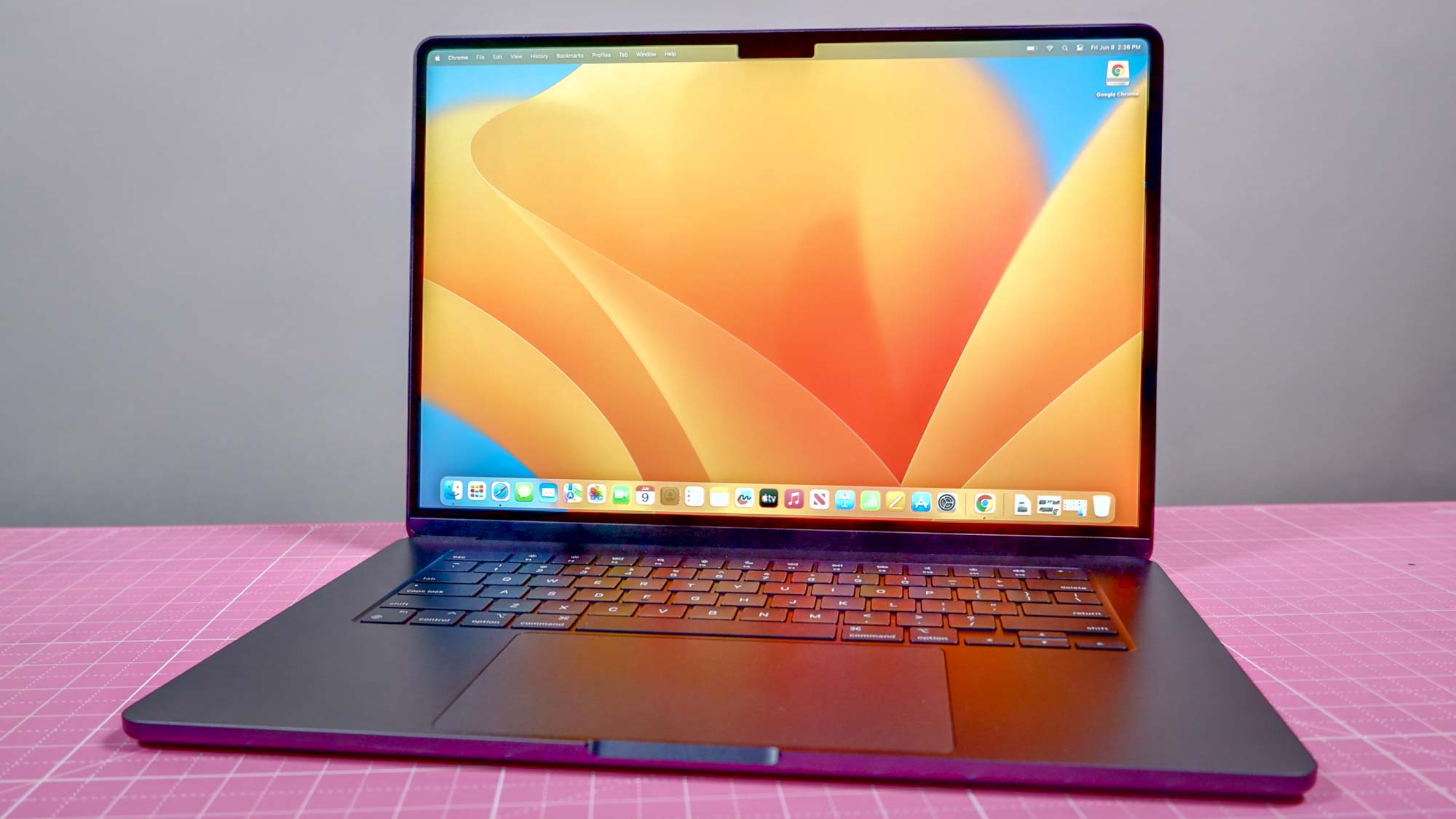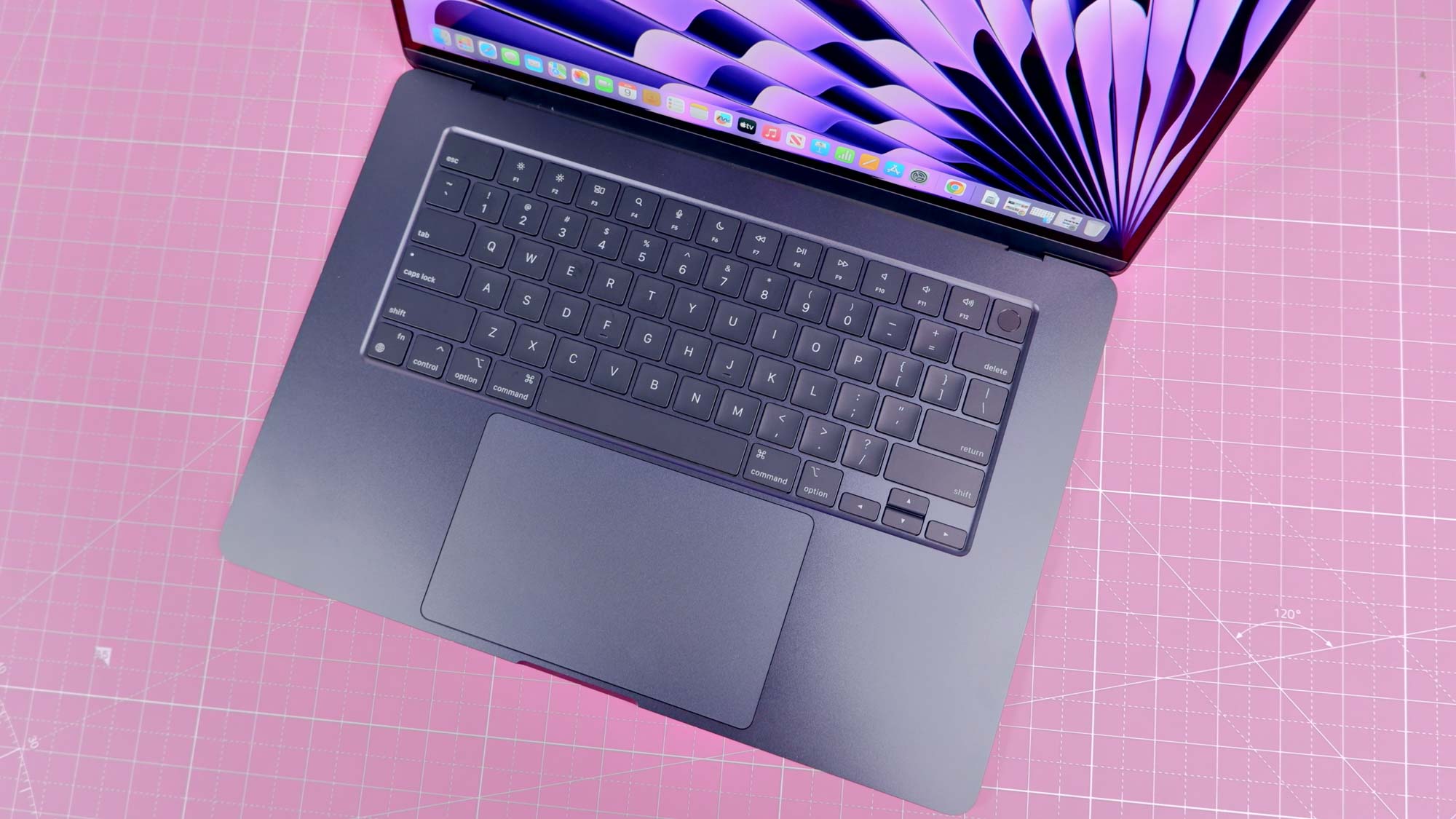The MacBook Air 15-inch has an SSD problem — here's why
It might be our favorite 15-inch laptop, but the latest Air has an SSD issue

The new MacBook Air 15-inch is out now, and for the most part we love it. Apple’s M2-powered baby may have only just hit shelves, but it’s already our favorite 15-inch laptop on the market. Yet annoyingly, the latest Air rolls out a returning issue we saw with its predecessor.
As discovered by YouTuber MaxTech (thanks iMore), the MacBook Air 15-inch has a storage issue. As was the case with last year’s Macbook Air 13-inch, the larger M2 model is slightly hobbled when it comes to read/write speeds.
Just like its 2022 predecessor, this issue only plagues the cheapest 15-inch Air configuration. Starting at $1,299/£1,399, the base model of the latest Air is limited to 256GB of storage. While such a paltry amount of space is already an issue in itself, the more annoying problem lies with the starting unit’s SSD.
The base 15-inch Air’s SSD has a single NAND chipset, which is a far cry from the bleeding edge tech you get from the laptop’s 16-core Neural Engine silicon. It also makes the 256GB model somewhat the black sheep of the MacBook Air 15-inch family. The more expensive configs — Apple’s latest lightweight MacBook can be beefed up with 512GB, 1TB or even 2TB of storage — come with slightly speedier SSDs.
MacBook Air 15-inch test (in MBps)

| Row 0 - Cell 0 | Write (MBps) | Read (MBps) |
| Macbook Air 15-inch (512GB) | 3,145 | 2,793 |
| MacBook Air 15-inch (256GB) | 1,466 | 1,463 |
We tested our 512GB reivew unit with our Black Magic speed test. Comparing our numbers to the SSD results MaxTech discovered points to drive performance being significantly slower in the starting MacBook Air 15-inch.
Unlike the starting 256GB version, the more expensive models all get storage drives that use two NAND chips, which boosts read/write performance. This explains the difference in the numbers of the chart above.
Are everyday users likely to notice this upgrade in minute-to-minute tasks? Perhaps. But for most, slightly slower file transfers probably won’t be a deal-breaker.
Sign up to get the BEST of Tom's Guide direct to your inbox.
Get instant access to breaking news, the hottest reviews, great deals and helpful tips.
If you’re feeling flush and want to push the boat out, the 512GB version of the MacBook Air 15-inch M2 costs $1,499/£1,599. If you need even more storage, the 1TB model costs an additional $200/£200, while the largest 2TB version tops out at $2,099/£2,199.
And if money really is no object, you can further beef up the 15-inch Air by upgrading the laptop’s memory. The starting version comes with 8GB of unified memory, but if you want maximum performance from the latest Air, you can upgrade to 24GB of unified memory for an additional $200/£200.
Pair the most expensive memory option with 2TB of storage, and you’ve suddenly got an eye-watering bill of $2,499/£2,599 on your hands.
Pair the most expensive memory option with 2TB of storage, and you’ve suddenly got an eye-watering bill of $2,499/£2,599 on your hands. Ouch.
Despite slight storage discrepancies, the starting MacBook 15-inch Air actually holds up better than last year’s 13-inch. Unlike this year’s base edition, which is treated to the same GPU configuration as more expensive models, the cheapest version of its predecessor had a weaker graphics chip compared to more costly configs.
Whether you buy the base Apple 15-inch Air M2 or a more expensive configuration, this is one hell of a MacBook. Hugely portable, sleekly designed and boasting a gorgeous Liquid Retina display and more commanding speakers than the 13-inch model, it’s simply one of the best laptops in 2023.
More from Tom's Guide

Dave is a computing editor at Tom’s Guide and covers everything from cutting edge laptops to ultrawide monitors. When he’s not worrying about dead pixels, Dave enjoys regularly rebuilding his PC for absolutely no reason at all. In a previous life, he worked as a video game journalist for 15 years, with bylines across GamesRadar+, PC Gamer and TechRadar. Despite owning a graphics card that costs roughly the same as your average used car, he still enjoys gaming on the go and is regularly glued to his Switch. Away from tech, most of Dave’s time is taken up by walking his husky, buying new TVs at an embarrassing rate and obsessing over his beloved Arsenal.
